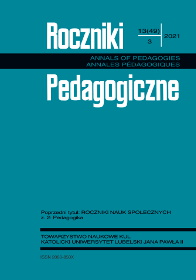Perspektywy monitorowania stężenia alkoholu w trybie ciągłym wobec osób osadzonych w więzieniach
Perspectives of Continuous Monitoring of Alcohol Concentration in Case of Prisoners
Author(s): Piotr LapińskiSubject(s): Social Sciences, Sociology, Substance abuse and addiction
Published by: Towarzystwo Naukowe KUL & Katolicki Uniwersytet Lubelski Jana Pawła II
Keywords: prisoner; sobriety; furlough; pass; conditional release; monitoring of alcohol concentration
Summary/Abstract: The consumption of alcohol is a serious violation of prison security. This incident strongly disturbs the process of change-forming effect applied to this person. Due to such events random sobriety checks are practiced in prisons, especially to prisoners returning from activities outside penitentiary as well as to those returning from passes. Controlling the sobriety of prisoners with the use of previously available breath alcohol measuring devices makes the system porous. The reason is that in case of jailed people the requirement to measure means contact between the monitored inmate and the device is done almost exclusively on the premises of the prison. It would be beneficial to complement this system by using devices that monitor the alcohol concentration level on a continuous basis (also when the prisoner is outside the penitentiary), preferably without the direct involvement of third parties (e.g. security guards) in the measurement itself. The article is based on an expert opinion prepared in 2020 for the Minister of Justice in Poland. The article discusses the prospects of using the continuous alcohol monitoring system with regard to inmates. This issue was raised in relation to people using passes, employed outside the prison premises and those conditionally released from penitentiaries.
Journal: Roczniki Pedagogiczne
- Issue Year: 13/2021
- Issue No: 3
- Page Range: 99-116
- Page Count: 18
- Language: Polish

